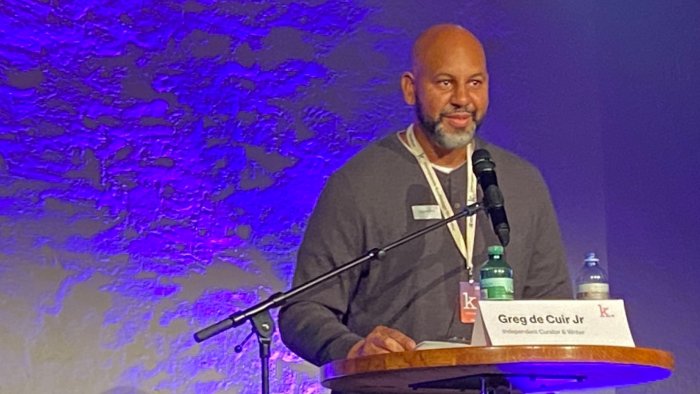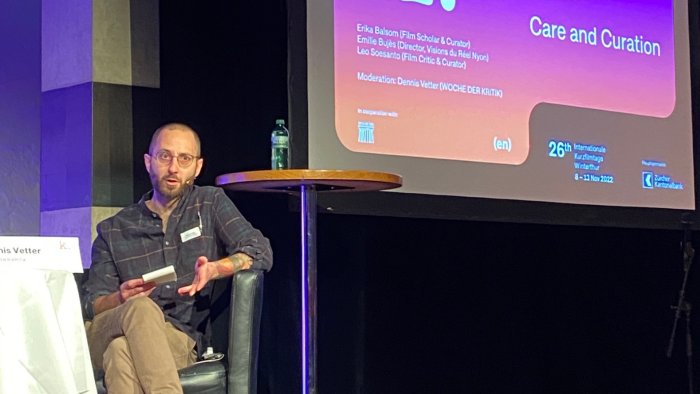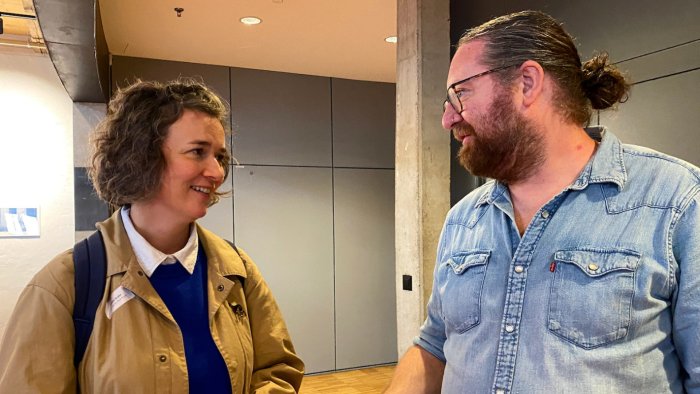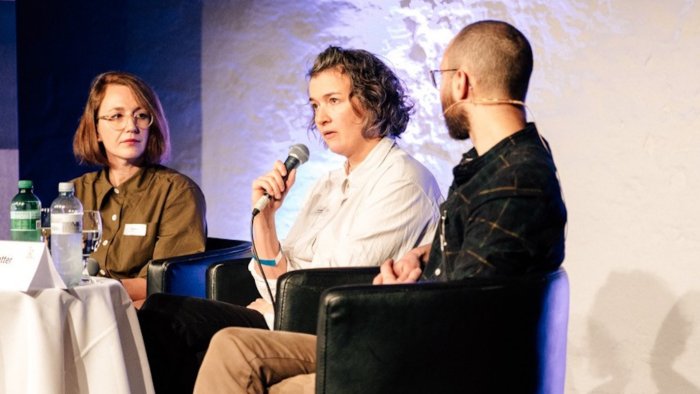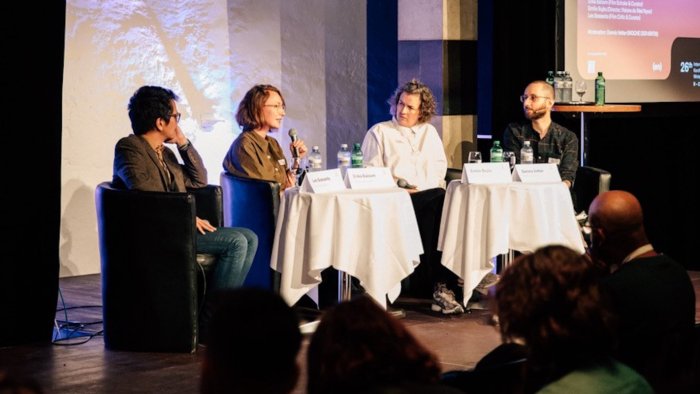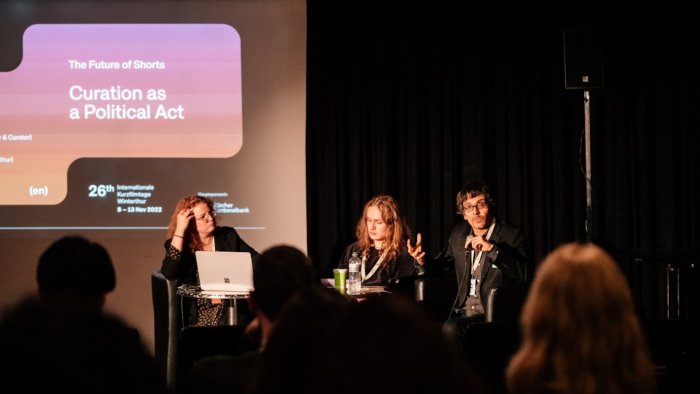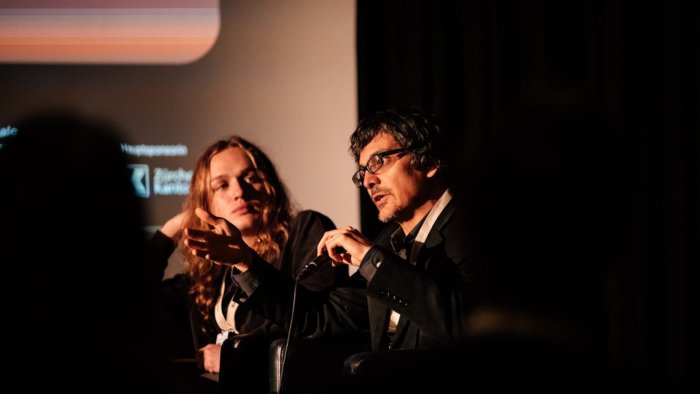Positioning Curation as Care and Performance
A critical assessment after the Industry Days at the Internationale Kurzfilmtage Winterthur - by Giuseppe Di Salvatore
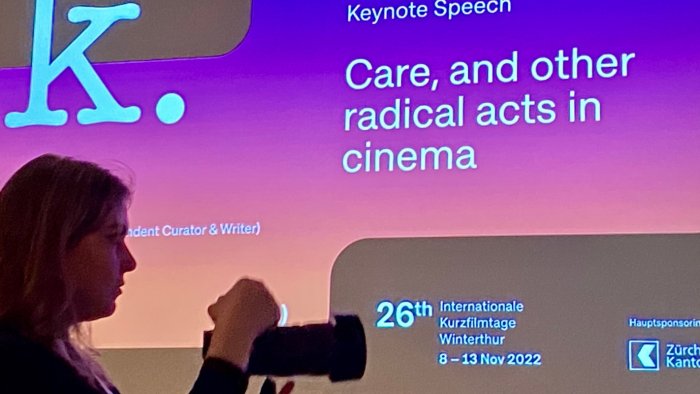
[…] If we want to translate it in political terms: the curator should be both liberal and socialist with what they curate.
[…] The curator should also take care of how the artist or the work will be positioned within a specific context and how it will enter into a dialogue with non-curated artists or works, or with other ideas of curation.
POSITIONING CURATION AS CARE AND PERFORMANCE
Industry Days, Winterthur. I mean, the International Kurzfilmtage Winterthur, which is always a wonderful occasion to focus on curating. Yes, as short films are usually projected in blocks: how to un-block them? How to make them breathe their own life and personality? The strategy of contrasting them within a block is tiring for the viewer; the cinema theatre should not become an amusement park. Therefore, a programmer has the (non-)choice of resorting to mythical Intuition – which is often the sister of Chance – or, more humbly, assuming the risk of proposing thematic lines.
A delicate, political question
This second option is the honest one that we find in Winterthur, where programmers become curators, and reveal themselves (on curating short films programmes see also Filmexplorer's interview with Laura Walde in Winterthur - 2019, and Filmexplorer's interview with Tizian Büchi in Locarno - 2019). And this is an art, because the curator should shape the thematic line to be open enough in order to respect the individual works, and specific enough in order to make it sound, and allow it to sound catchy. If we want to translate it in political terms: the curator should be both liberal and socialist with what they curate. In fact, the blocks at Winterthur seem not to block the shorts, yet do not themselves fully disappear. Has John Canciani and his team solved the old dilemma of making liberalism and socialism work together? This delicate question, which can well be raised about the concrete art of proposing a block of short films in a cinema theatre, and the question of curation in general, has been one of the main topic of the meet-and-discuss events organised by Gabriela Seidel-Hollaender and her team at the Alte Kaserne. A topic that has been worth approaching at large.
Branding-phobia
A particular argument by Erika Balsom, speaking in a panel curated by Dennis Vetter in the Industry Days of Winterthur, apparently does not see any room for a socialist side by “the curators”. She prefers to use the word “programmer” to “curator” because in the boosting of the figure of the self-made and financially precarious curator, which began in the Nineties, she sees the instrument of a neo-liberal strategy of commercial branding in the free market of art and culture.
I simultaneously like and don’t like this argument. I like it, insofar as it points out how the demiurgic subjectivity of curators as part of a narcissist star system (that is as old as the modern pattern of continuously emergent artists-geniuses) goes hand in hand with the liberal competition of individual winners and mass of losers. But the dispensable exclusivity – read superiority – of the curator and their subjectivity should not be confused with the indispensable exclusivity – read specificity – of the curated idea. If this idea is something that the curator inclusively shares with the artists, their works, and the audience, then the clear positioning of this idea – read branding – is essential for a lively cultural dialogue. Branding is not negative per se, but an essential element of art and culture to the extent that it refers to ideas.
The double sense of positioning
Feeling the need to unpack the vague concept of “branding ideas”, I was quite happy to hear Federico Windhausen make an important distinction concerning positioning in curation – referring to Geoff King’s reflection on the theme. One can take position for an idea or position an idea. Supporting an idea does not necessarily imply to aim at its success within a specific context. The virtue of just supporting an idea is that the curator does not want to impose the idea as being better than (all) the other ideas; it is the virtue of open attitudes. The limit of this attitude is probably its being anchored in a time that is gone. This is the post-modern time where the “aesthetic of the fragment” – defended by Windhausen himself – of recycling and recombining (in another discussion Léo Soesantos resumes his vision of curation as “DJing”), in a word: of multiplicity, was a strong stance against the modernist landscape of monolithic manifestos and paradigms that wanted to be hegemonic. Today, multiplicity and fragmentation structurally dominate, and open attitudes evanesce as drops in the ocean.
Should the curator come back to normative positioning? Not really, or not only. We actually should not fear to position ideas, to do more than just support them – that is to place them within a context. To a certain degree, the specific degree of remaining open to dialogue, or even wanting to have a confrontation with other positions in exposing our own, normative positioning should be welcomed. It will also show that a curator takes their ideas seriously, and not as an interchangeable piece in a giant mosaic of small talk dominated by consensual and politically correct slogans. It will show that they really care.
Curation as care – and trust
This reflection allows us, to my eyes, to approach the question of curation as care from the best perspective. It was up to a charming Greg de Cuir to recall that the word “curation” comes from the Latin cura – care – thereby giving the kick-start to the Industry Days in Winterthur. The affective, loving, respectful and responsible attitude of the caring curator makes all people agree, and agree in dispossessing the curator of their egocentric hubris. But it would be not enough to transform the curator from a patriarchal father into an affectionate mother because the best horizontal and reciprocal relationship between the curator and the artist, or the work, will be in adding to the curator’s taking responsibility their giving responsibility. This is the reason it has been so important to me that, in her quite pragmatical assessment on curation, Emilie Bujès stresses the importance of trusting in curating.
Now, curating as taking care upgrades the ethical quality of the relationship between the curator and the artist/the work; at the same time it demands a bigger effort, which cannot but make the curator’s selection more restrictive. Paradoxically, the ethical upgrade could increase the problem of exclusion in curation, exclusion of what is not curated. This point shows how urgent it is to expand caring beyond the curator/artist or curator/work relationship. The curator should also take care of how the artist or the work will be positioned within a specific context and how it will enter into a dialogue with non-curated artists or works, or with other ideas of curation.
Out of the bubble, yes, performatively
In this respect, Olexii Kuchanskyi’s systematic (almost Hegelian) reflection on the effects of curating has been particularly beneficial to specifying what “positioning within a context” can mean. Beside the aesthetic issues, curating means taking a stance about infrastructural and institutional issues. This is a further political feature of curating that, I will add, should however not be separated by the political content of the aesthetic issues themselves. It is important to criticise the aesthetic bubble in which a curation can remain, as well as the procedural bubble in which some curators get trapped in, forgetting the aesthetic issues.
The most interesting way to imagine how to position a curatorial idea within a specific context, that is how to go outside of the bubble – to come back to a central question raised by John Canciani himself – is when one takes into account, takes seriously, and takes care of, the performative experience that the curation itself is able to create (in this respect, Kuchanskyi refers to Ian White’s curatorial practice). Here the focus shifts to the effects of curating and the programming activity re-orients towards the audience. Curating is no longer only a question of selecting, listing and “cataloguing”, but of creating a space and a time where the artists, the works and the audience are connected through an experience. To this, Laura Walde proposes to expand the idea of performance in terms of physical experience into a “performance of knowledge”, which would be the direct consequence of the curatorial act of framing when consciously thought of as intervention.
Curation at eye-level
To sum up: what I critically learnt from the Industry Days in Winterthur is that a caring curator takes an idea seriously and responsibly positions it within a context through a (re-)framing that intervenes and modifies this context in triggering a sharable experience and in seeking for dialogue. Synthetic expression are monstrous and this one is as correct as it is unreadable, but in the end it is just a way to get into details and render explicit the “delicate question” from which I started when speaking of proposing blocks of short films. That is the political question of curation as negotiation between a liberal and socialist attitude towards what is curated, in which context, for whom, to which effect.
Caring and trusting but also, and at the same time, consciously intervening and responsibly positioning, seem to constitute the most interesting recipe for the 21st century cake of curation, and this is somehow an urgent recipe, if we want to overcome the undigestible meals made up of (old modernist) reductionist slogans or (post-modern) self-effacing non-choices. Know-it-all top-down or seemingly democratic bottom-up patterns do not fit into a 21st century that dramatically needs for horizontal, eye-level models of dialogue.
Internationale Kurzfilmtage Winterthur | Industry Lab | John Canciani, Gabriela Seidel-Hollaender | 11/11/2022
Photos: © Laura Rübli, © Andrin Fretz, © Ruth Baettig

